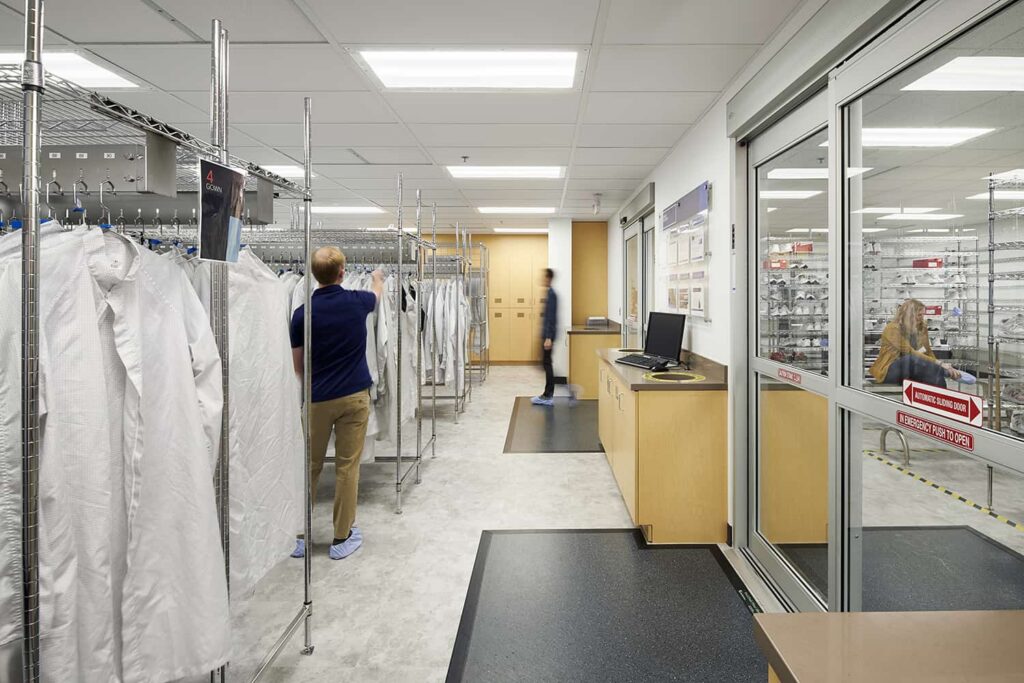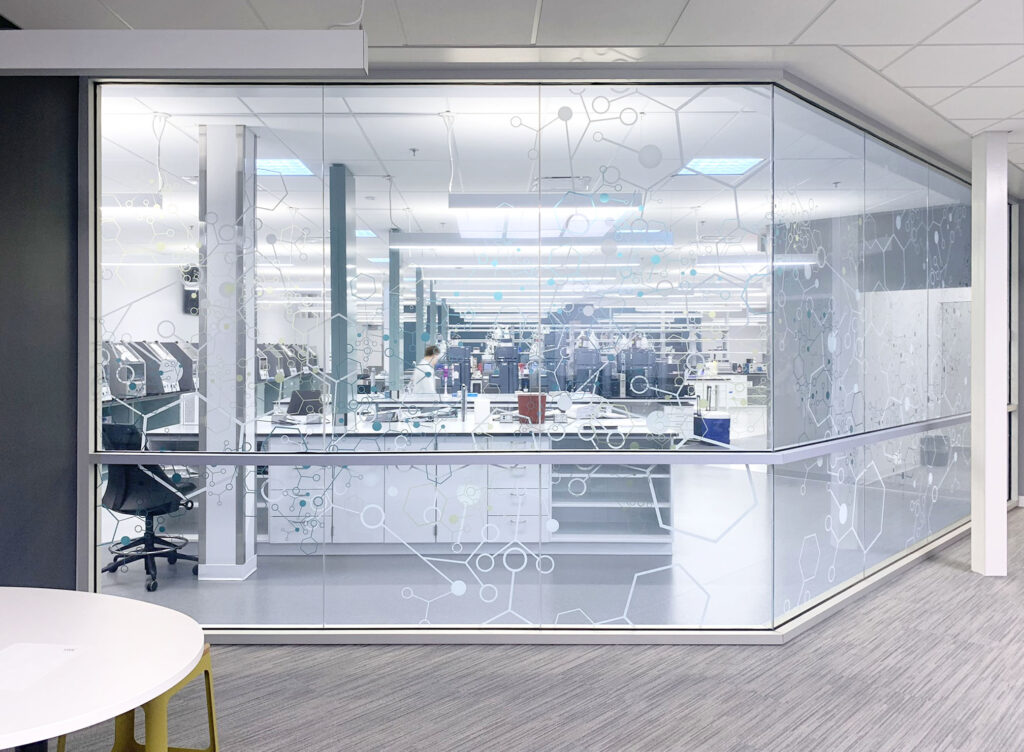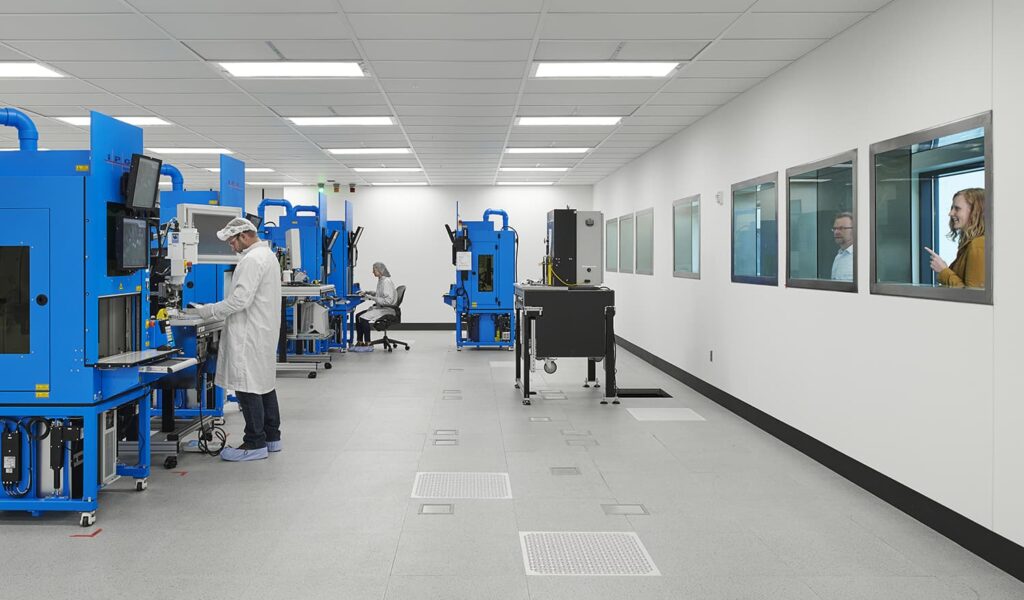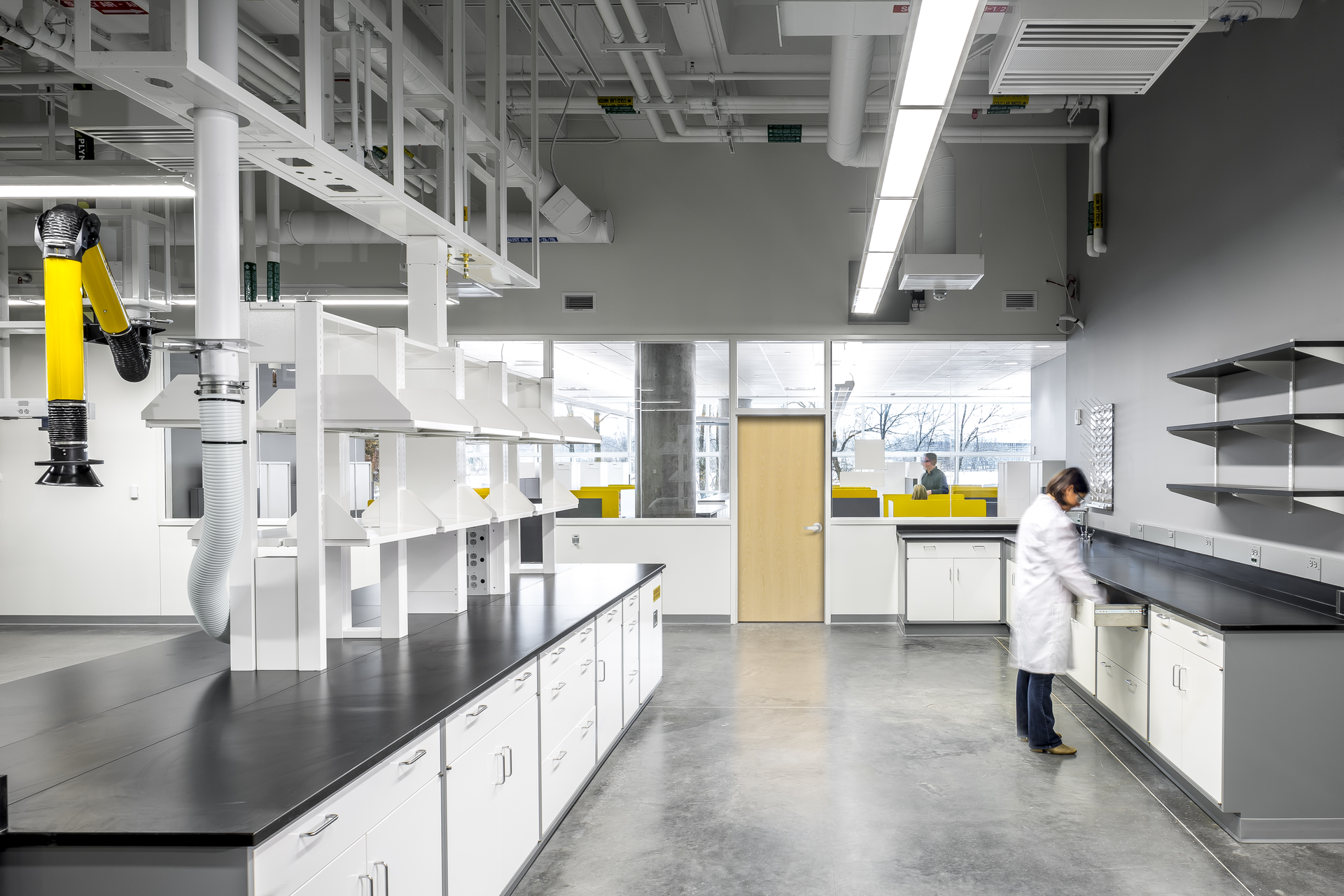Interior design and architecture are often described as perfectly blending art, science, and technology. Part of the beauty of that blend is being able to craft spaces that look aesthetically pleasing and yet also have a lot going on behind the scenes, with every element meticulously planned to optimize efficiency and effectiveness.
Perhaps nowhere else does that blend matter more than when designing spaces specifically for the science and technology sector. At BWBR, we work with a number of high-tech firms in the medical device and biotech arenas. We’re often tasked with creating new lab spaces to help R&D teams innovate, and the stakes are high. It’s up to us to help set the stage for these teams to create critical breakthroughs. No pressure, right?
Fortunately, our team is very much up to the task.
The Science of Design
For a recent episode of our podcast Side of Design, Jarett Anderson sat down with BWBR design leader and architect Chris Fischer, and interior designer Kat Lauer, to talk about their work servicing our science and technology clients.
One word that came up again and again when discussing this type of work: complexity.
“These are spaces where we need to sweat the details,” said Jarett. “These spaces may seem clean and simple on the surface, but you have to pay attention to everything — the materials used in finishes, how things are insulated… you name it.”

A lot of these spaces are heavily regulated with extraordinarily high operational standards and codes, so the spaces need to not only make it easier for lab technicians to do their best work, but to do so within very strict confines.
Keeping it Under Control
Chris points out that an added element is an ability to blend controlled environments (e.g., closed-off spaces that have specific humidity levels, air cleanliness, etc.) with transparency and flow so that as people come and go, they’re not disrupting the environment. “There are staff coming in, gases and storage and supplies, and waste coming out,” explains Jarett, and the specifics of that flow are unique to every individual client and project.

There are so many things to consider — how often are doors being opened? Can you eat lunch there? What’s the ventilation like? Is the environment set up for success in R&D while also providing a comfortable place for staff to work? Kat adds that investors and potential customers also may need to be able to access the working environment in order to get a feel for what’s happening, all while ensuring that the environment itself is protected.
Flex Space
As if that’s not enough to consider, there’s an increasing desire for these spaces to be both particular and flexible/adaptable. “When many people picture a lab, they picture what they might have experienced in high school or college with fixed casework,” says Kat. “But in an R&D facility, they want to be nimble and agile and move equipment around as their needs adjust.” Balancing that flexibility with meticulous, measurable standards for materials, air flow, chemical use, etc. — is a challenging task, to say the least.
Both Kat and Chris trained as scientists, attending graduate school for biophysics and molecular biology, respectively. That experience helps them in their work at BWBR as they envision what it will be like to work in a lab space on a day-to-day basis, really digging into the lived experience of the people who spend time there.
As scientists, Kat and Chris know how to plot and diagram, test and re-test, tweaking variables and formulas until they get the result they need. That experience is incredibly valuable for their clients and makes them uniquely suited to design in the science and technology sector.
Kat closes with a thought on how she pivoted from biophysics to interior design, a fitting end to a discussion of the intersection of art and science: “When I was in grad school and trying to figure out if I wanted to stay in science, I was spending more time organizing and labeling the lab than I was doing my experiments. I think that told me that maybe designing the space for the people who are going to change the world is more my place than running the experiments.”
To hear the full podcast, click here.








